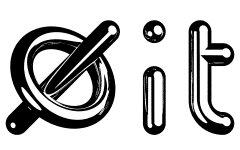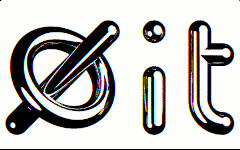SubLCD-3:
twice as many pixels on LCD screens and similar.
It doubles the horizontal resolution, while avoiding colour fringing, and patents. Nice for 3D headsets, because real 3D effects depend on sharpness.
Twice as sharp pictures on LCD screens are possible with this method,
which is very simple, visually good, and not patented.
If seriously interested, you may contact me:
kim.oyhus@gmail.com
Index
Source code.
How does it work?
What about the Cleartype patent?
SubLCD is different from Cleartype
Examples
| Normal |
SubLCD-3 |
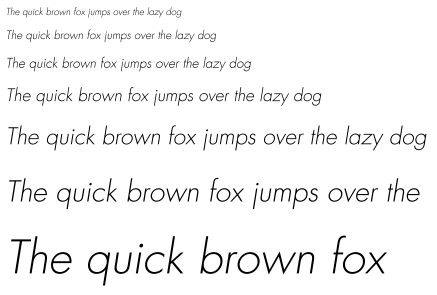 |

Note how thin and fine the lines are here! |
Normal
SubLCD-3
| Normal |
SubLCD-3 |
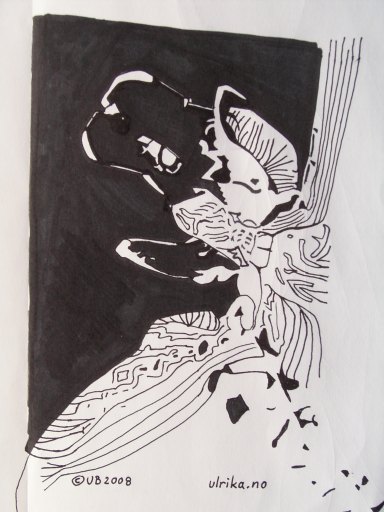 |
 |
Source code?
Here it is:
SubLCD-3.c
Use it like this:
./SubLCD-3 < input_file_in_binary_raw.ppm > halved_output_file.ppm
It can be compiled like this:
gcc -o SubLCD-3 SubLCD-3.c -lm -O3
The license is Gnu Public License version 3. The copyright is mine.
So, if you want to use SubLCD-3 commercially, you should make a deal with
me.
If you want to use it in freedom software, you can, because of GPL v3.
How does it work?
The picture goes through
SubLCD-1 first, which shrinks it to half the size, but double the
resolution. This results in colour fringing at some thin vertical
lines. With a model of the eye, SubLCD-3 estimates these colour
artifacts, and removes them
1.
To demonstrate this process,
I start with this test picture: |
 |
2.
After being processed by SubLCD-1,
this is the result, with colour fringes: |
 |
3.
The colour fringes are
then modeled,
giving this: |
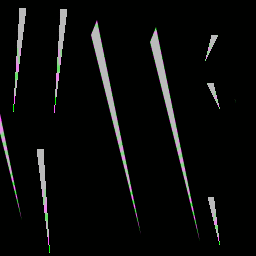 |
4.
Correcting for them
gives the final result: |
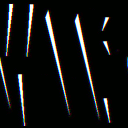 |
What about the Cleartype patent?
Not a real problem, because:
- SubLCD is different from Cleartype
- Prior art
- Obviousness
- SubLCD will never be patented
As for my competence talking about this:
I made one of my patent applications myself: PCT/NO2005/000027.
It can be found at WIPO
by searching for "Oyhus".
Prior art
SubLCD has prior art even
if Cleartype does not, because SubLCD uses green and purple pixels, as
did the prior art.
Obvious
Again, the prior art shows how obvious this was. And the fact that I
independently invented something so like it, is yet another sign of
its obviousness.
SubLCD will never be patented
I promise that.
SubLCD is different from Cleartype
And here we come to the part where patents are discussed.
Thanks to David Turner for rounding them
up
here.
The reasons SubLCD falls outside all the independent claims of all the patents
are:
-
SubLCD does not use the pixel sub-components
individually, but instead groups red and blue together from
different source pixels. I call this "the purple pixel".
-
Having just one pixel sub-component, green, also puts it outside the claims.
-
SubLCD also avoids the filtering and many-to-one pixel projections
of the patents, since it projects each source pixel
separately.
(SubLCD-3 does some post processing by colour
bleeding, which is also quite different from the patents.)
The effect of this green and red-blue pixel strategy of SubLCD is to
decrease luminosity artifacts, in such as giving diagonal edge steps more
equal luminosity, so they look better.
Here they are:
- USPAT6219025
- Claims 1, (2, 3, 4, 5, 6, 7)
...applying the separate luminous intensity values to each
sub-component rather than to entire pixels, resulting in
each of the pixel sub-components, rather than entire pixels,
representing the displayed image.
- Claims 8, (9, (10, 11), 12, 13)
...each of the pixel sub-components rather than entire pixels...
This claim repeat stuff like this a lot.
- Claims 14, (15, 16, 17, 18, 19, 20)
...each of the pixel sub-components having mapped thereto a
spatially different set of one or more of the samples,...
Very like the other claims, except this time its a "program" instead
of a "method" or a "computer" system, even though it really is the
same thing. Stupid redundancy like this is very typical of patents.
- Claims 21, (22, (23, 24), 25, 26)
...for each of the first, second, and third pixel sub-components...
More of the same stuff, phrased a little differently.
- Claims 27, (28, (29, 30, (31, (32 )))
...a plurality of pixel sub-components each having one of
three different colors...
This time it is a "display device" for a computer. Sigh.
- Claims 33, (34, (35, 36, (37, (38 ))))
More of the same.
All different from SubLCD because of the "each sub-component" requirement.
Now you have seen how patents
"work", so I will be briefer.
- USPAT6239783
- Claims 1 (2 3 4 (5 ) 6 7 )
...separate luminous intensity value for each pixel sub-component...
Again 3 different sub-pixels.
- Claims 13 (14 15 16 (17 ) 18 19)
Same stuff.
- Claims 20 (21 (22 ) 23 24 )
Same.
- Claims 25 (26 (27 28 (29 (30 ) 31 (32 ))))
Same.
- Claims 33 ( 34 (35 36 (37 (38 ) 39 ) ) 40 )
Same.
All different from SubLCD because of the "each sub-component" requirement.
- USPAT6307566
- Claims 1 (2 3 4 5 (6 (7 8 (9))))
Same, except that the 3 subpixels being colours are revealed in claim 2..
- Claims 10
Same.
- Claims 11 (12 (13 ))
Different!
Mentions 2 sub-pixels, with 3rd in
claim 12. However, it specifies uneven sampling, while SubLCD
use even sampling. And SubLCD only uses 1 pixel sub-component,
and 1 aggregated purple pixel from 2 separate pixels. This means
that the purple pixel is not a sub-component of a pixel, so it is
falls outside of this claim.
- Claims 14 (15 (16 17 ))
Same as claim 11.
- Claims 18 (19 20 21 )
Same as before, with 3 sub-pixels, but also with filtering..
All different from SubLCD.
- USPAT6225973
- Claims 11 (2 3 4 5 (6 (7 )))
Same 3 sub-pixel stuff.
- Claims 8 (9 (10 ) 11 12 13 )
Same.
- Claims 14 (15 16 17 18 (19 (20 )))
Same.
- Claims 21 (22 (23 ) 24 25 26 )
Same.
- Claims 27 (28 (29 30 (31 (32 ) 33)))
Same.
- Claims 34 (35 (36 ) 37 (38 (39) 40 ))
Same.
All different from SubLCD.
- USPAT6243070
- Claims 1 (2 (3 (4 )) 5 (6 ) 7 (8 ) 9 10 )
Same 3 sub-pixel stuff.
- Claims 11 (12 (13 ))
Same.
- Claims 14 (15 (16 ))
Same.
- Claims 17 (18 (19 ) 20 )
Same.
- Claims 21
Same.
- Claims 22 (23 24 (25 ) 26 27 28 23->29 )
A little different.
Claim 22 is about sub-pixels with foreground and background colours,
which SubLCD does not have at all, so it falls outside this claim.
The individual 3 colours are mentioned in separate claims, which is unusual.
- Claims 30
Similar to claim 22.
- Claims 31 (32 (33 ))
Similar to claim 22.
- Claims 34 (35 (36 ))
Similar to claim 22.
All different from SubLCD.
- USPAT6393145
- Claims 1 (2 (19 ) 3 4 18 24)
... each said scan line comprising at least two samples per sub-pixel element...
It talks about oversampling, many-pixel-to-one-sub-pixel, which SubLCD does not do.
...a separate filtered color value associated with each sub-pixel element...
SubLCD does not use separate colours. Just one, red, which is singular, not plural.
The blue-red pixel in SubLCD is not a sub-pixel element.
- Claims 5 (6 20 25)
...by separately controlling each sub-pixel element using the
color value mapped thereto.
Similar to claim 1. SubLCD does not have "the colour value controlling each sub-pixel",
since the blue-red pixel has several colour values.
- Claims 7 (8 (22 ) 9 10 11 (23 ) 21 26)
About foreground and background colours, which SubLCD does not have.
- Claims 12 (13 )
Similar to claim 5. Seems to contain spelling and grammatical errors.
- Claims 14
Same.
- Claims 27 (28 19 )
Filtering stuff, which SubLCD does
not do. Claim 19 is about something as well known as gamma
correction.
All different from SubLCD.
- USPAT6421054
All different from SubLCD.
- USPAT6282327
This patent is primarily about font hinting with
sub-pixels. SubLCD does not do hinting.
- Claims 1 (2 (3 (4 ) 5 (6 ) 7 (8 ) 9 (10 (11 )) 12 (13 (14 ))))
Font hinting.
- Claims 15 (16 )
Same.
- Claims 17 (18 (19 20 21 22 )
Same.
- Claims 23
Same.
All different from SubLCD.
- USPAT6624828
This patent is primarily about adjusting screens to
individuals. It is clearly a collection of separate technologies,
all of which I have probably seen other places.
- Claims 1 (2 3 4 5 (6 ) 7 8 )
...each pixel having a plurality of pixel sub-components of
different colors that may each be treated as independent
luminous intensity sources, ...
SubLCD do not treat them
as independent, since blue & red of different pixels are
combined to a blue-red pixel. Anyway, "may be ... treated" is far
too general and vague to be valid, since without it, one is left
with a conventional display system, which is known art.
- Claims 9 (10 11 12 13 14 (15 ) 16 17 )
Same.
- Claims 18
Same.
Too different from SubLCD, and too broad.
Changelog
2008-11-29
2 days of reading patents and claims. Gah!
Put the analysis of them here.
2007-11-20
I put it on the net.





